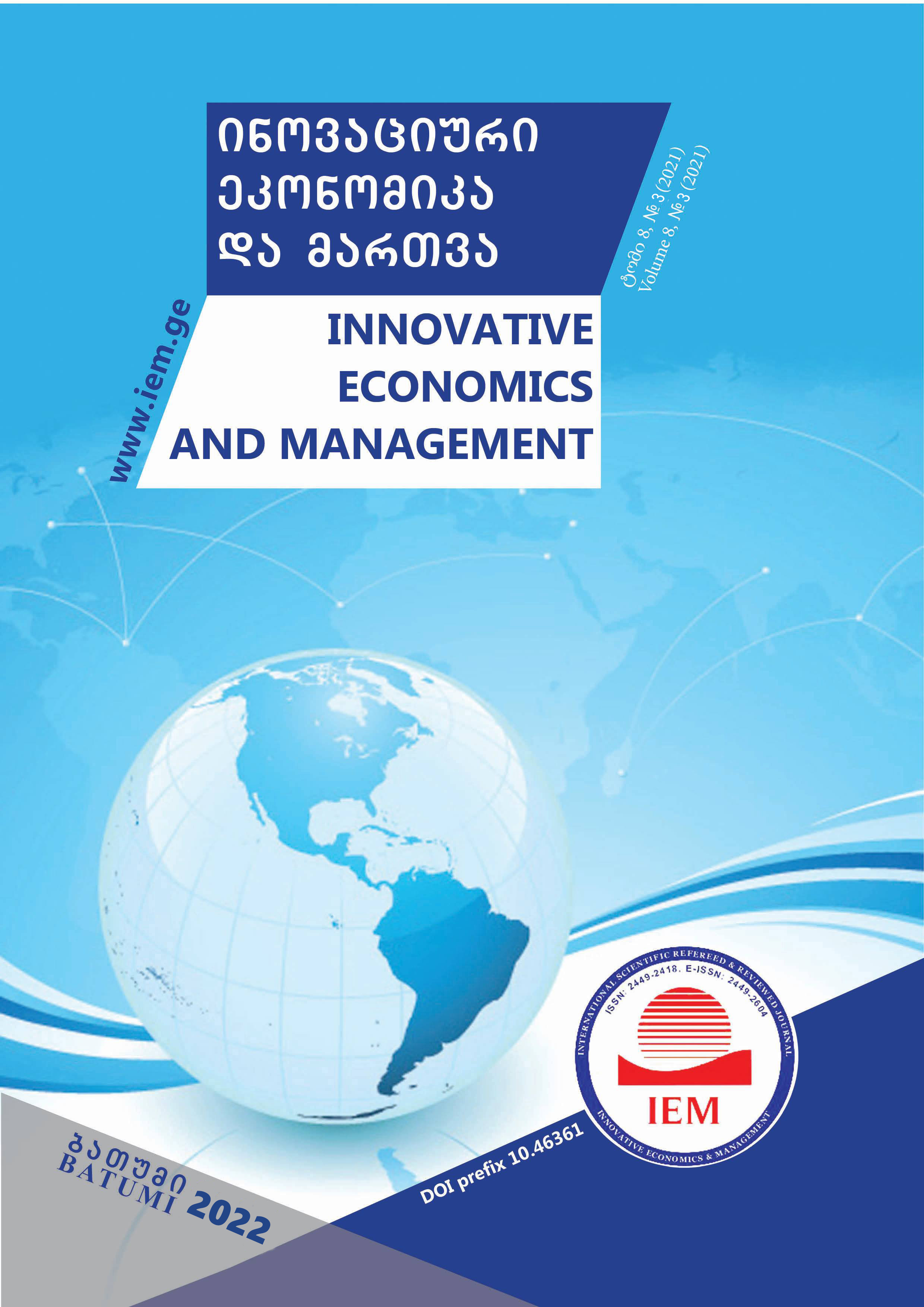DEMOGRAPHIC PROBLEMS OF KAKHETI REGION
Nino Dokhturishvili
Ivane Javakhishvili Tbilisi State University, Tbilisi, Georgia
Email: nino.doxturishvili@tsu.ge
 https://orcid.org/0000-0001-8291-3388
https://orcid.org/0000-0001-8291-3388
Abstract
ABSTRACT. The demographic development of Georgia and the trends of the current demographic processes are discussed by Georgian demographers in general, throughout the country. There are relatively few researches performed in the direction of regional demography. Kakheti region is an important region of Georgia from both socio-economic and demographic point of view. According to the data of 2021, the population of Kakheti is slightly more than 8 percent of the population of Georgia (310 thousand), and it is inferior in number only to Adjara, Imereti and Kvemo Kartli. The purpose of the article is to reveal the modern trends of demographic processes in the Kakheti region and reveal the quantitative analysis. In order to achieve this goal, in the article I analyzed the statistical characteristics of the current demographic processes in Kakheti. On the basis of which, argumentative conclusions were developed in full compliance with the ethics of statistics. In the process of working on the article, the database of the National Statistical Service of Georgia was used. According to the data of the National Statistical Service of Georgia, the tendency of the population of Kakheti to decrease has been recorded since the 90s of the last century. By 2021, the population of Kakheti region amounted to 309.6 thousand people, which decreased by 0.005% compared to the previous year, and decreased by 0.2% compared to 2010 (Georgian National Statistics Service). We can clearly see that the population of the Kakheti region is characterized by a sharp decreasing trend, which is clearly visible in the diagram. It is interesting to discuss the population in Georgia in terms of birth, mortality, natural increase and migration. In the Kakheti region, as well as in the whole of Georgia, social, political, ethnic, psychological and economic problems, which affect the socio-economic situation of each family, are the reasons for the decrease in the birth rate. The issue of mortality and life expectancy is no less problematic. The increase in mortality over time was typical for all regions, including the Kakheti region, which is mainly the result of demographic aging. Life expectancy at birth for men in the Kakheti region is 68.9 years, and for women - 76.5 years. Migration has a significant impact on the demographic structure of the population. The influence of migration on the social and ethnic structure of the population, the distribution and settlement of the population is also great. The main reasons for migration are socio-economic, but political and military reasons, as well as natural conditions, are also important. Internal migration is a special problem. A large part of the population has moved to the capitals. According to the data of the general census, which was conducted in 2014, the population has decreased by more than 600 thousand. The rural population has decreased by almost 24%. In order to reduce internal migration, the government must ensure that the population returns to the mountainous regions and villages, so that the villages and regions are not depopulated. Based on the materials of the 2014 population census, the internal migrants of the Kakheti region made up 8.6%. It can be said that the Kakheti region is facing the trend of population reduction and aging of the nation at the same time. To stop all this, it is necessary to conduct an active demographic policy.
Downloads
References
ხმალძე, მერაბ, ჩიტალაძე ქეთევან. 2020. დემოგრაფიული სტატისტიკა. თბილისი. ელ-ვერსია.
ხმალაძე მერაბ, დემოგრაფია. თბ. 2009
Nino Paresashvili „Major Mechanisms to Develop the Strategies of the Labor Market in Georgia”, Journal: Procedia - Social and Behavioral Sciences, Volume 213, 1 December 2015, Pages 574-579, https://doi.org/10.1016/j.sbspro.2015.11.452
Nino Paresashvili1, Nino Abesadze, Rusudan Kinkladze, Ketevan Chitaladze and Teona Edzgveradze, „Georgian Labour Market during the Coronavirus Pandemic“, SHS Web of Conf., Volume 92, 2021 The 20th International Scientific Conference Globalization and its Socio-Economic Consequences 2020, https://doi.org/10.1051/shsconf/20219207046
Nino Paresashvili, Rusudan Kinkladze, Ketevan Chitaladze, Zumrud Nadjafova, Teona Edzgveradze, “LABOR MARKET MANAGEMENT MECHANISMS IN GEORGIA ACCORDING TO CURRENT TRENDS”, 55th International Scientific Conference on Economic and Social Development – Baku, 18-19 June, 2020, pg. 372-376
მელაძე, გიორგი. წულაძე, გიორგი. 1997. საქართველოს მოსახლეობა და დემოგრაფიული პროცესები. თბილისი.
სტატისტიკის ეროვნული სამსახური https://www.geostat.ge/ka
წულაძე, გიორგი. სულაბერიძე ავთანდილ. 2016. საქართველოს რეგიონების დემოგრაფიული თავისებურებები. თბილისი. „დემოგრაფიისა და სოციოლოგიის ინსტიტუტი“
კახეთის მხარეში სახელმწიფო რწმუნებულის ადმინისტრაცია https://www.kakheti.gov.ge/geo/static/5/regions
ტუხაშავილი მირიანი საქართველოს მოსახლეობის მიგრაცია. თბ., 1996
ტუხაშავილი მირიანი საქართველოს გარე მიგრაციული პრობლემები. კრებული: მიგრაცია 1. თბ., 2007
ხმალაძე, მერაბ. 2008. სტატისტიკა ეკონომიკასა და ბიზნესში. თბილისი. „მერიდიანი“.

This work is licensed under a Creative Commons Attribution-NonCommercial-NoDerivatives 4.0 International License.
Copyright (c) 2022 Nino Dokhturishvili

This work is licensed under a Creative Commons Attribution 4.0 International License.


.png)







